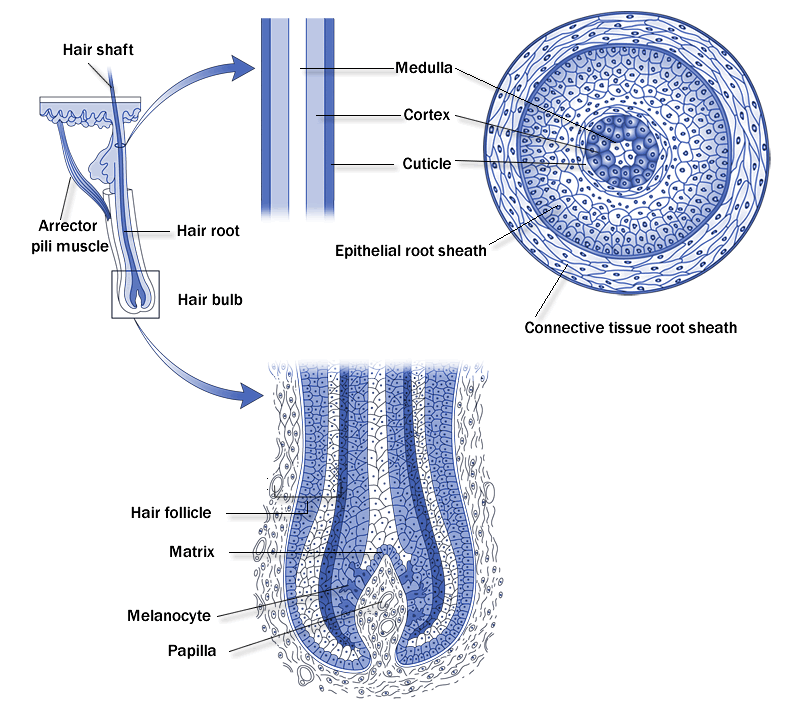Hair
- Identify the types of hair.
- Identify the functions of hair.
- Identify the structure of the hair bulb, hair follicle and hair.

Hair is located throughout the body except for the palms of the hands, soles of the feet and parts of the external genitalia. It is found as three different types: lanugo, vellus, and terminal hair. Lanugo is the fine body hair found on a fetus. Vellus hair is the wispy, body hair seen in both sexes. Terminal hair is located in various areas of the body including the scalp, eyebrows, axillary and public regions, and on the chest, arms and legs of men. It is darker, longer and more coarse than vellus hair.
Structure
Hair is organized into three zones:
- Bulb
- Root
- Shaft
In cross section, three layers are noted in the hair:
- Medulla
- Cortex
- Cuticle
Function
Hair protects the head from heat loss and provides sensory information from the skin. Hair located just inside the nostrils and in the ear canal protect those areas from dust and other material. The eyebrows allow for facial expression and protect the eyes from perspiration. The eyelashes protect the eyes from flying debris.